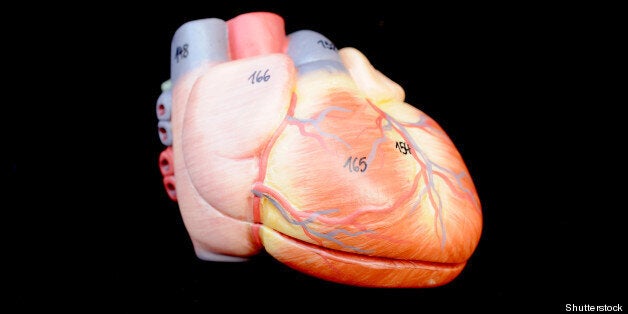
It was something that, in all honesty, I probably knew already, but I can now confirm that mindlessly staring at a question for minutes on end doesn't make the answer magically appear. All it achieves (if achieves isn't too strong a word in this context) is to make the question seem even more incomprehensible than it did in the first place. And it seemed pretty incomprehensible initially.
The question asks me to click on a diagram of a heart and indicate the location of the inferior vena cava. Sticking with the honesty theme, I didn't really know that the heart had a vena cava, and certainly not one with an inferiority complex. I feel sorry for it; presumably the inferior vena cava sits at home playing on a PlayStation wishing it could be a bit more outgoing while the vena cava swans about at parties talking loudly, if perhaps a touch boorishly, about how great it is at carrying blood around the lower half of the body.
After two and a half years' writing, commissioning and editing articles about health and fitness, I feel I've got a pretty good baseline knowledge, but wanted to improve upon this and build up my technical knowledge. I signed up to the PTA Global certification and here I am, on a Wednesday night after work, sitting in front of my laptop squinting at a picture of the heart and trying to guess which part of the heart looks like an inferior vena cava. I've heard people say that you can tell what someone is called by what they look like - you know, that guy looks like a Colin, or that woman looks like a Natasha. Surely this also works with parts of the heart? I click on a part of the diagram and submit my answer.
Yeah, turns out it doesn't work that way.
I've only recently started the course but I'm really enjoying it so far. The section on the circulatory system has been the hardest I've covered, but I feel I've got a good handle on the other modules that I've done so far, which include the body's energy system and anterior and posterior muscles. It's also not a bad thing that I've struggled with some questions. The course is mostly online - with some live training days and an exam at the end of it - so it's important that some of the questions are hard enough to force me to go back through certain modules again and add to my notes.
It's also got me thinking; how would a selection of fitness professionals perform if they had to take some of these end of module tests? I think that it's right that someone who wants to be a personal trainer has to learn, amongst a host of other things, most of the muscles and bones in the body but how much use would a PT who has been trained for three years have for being able to know where the phalanges are located? I mean, in the real world, the PT would just say 'toes' or 'fingers', right? Actually using the technical term is more likely to turn off a client. Clients want to know about weight loss, toning and building bigger arms and how the work they do in the gym will set them on the right road to achieve this. Most of them won't care about the high-level technical details.
To a certain extent, most exams are like this. It's important for them to be comprehensive, as those setting the exam know that not all of the information will be retained. For example, how many people do you know who drive like they were originally taught to? I think it's great that this PT course sets high standards when it comes to knowledge - I just wonder whether, if I became a PT, a lot of this information would be nice to have but unused on a day-to-day basis?